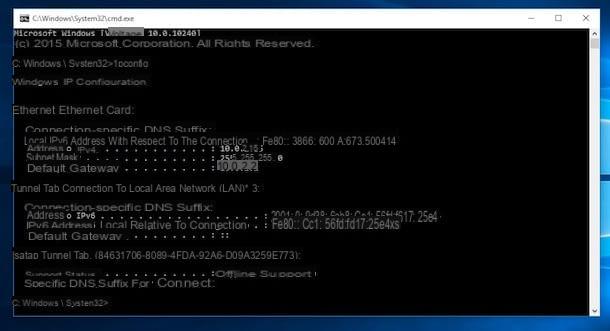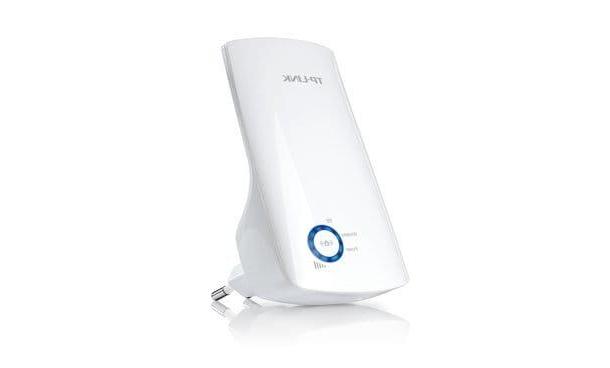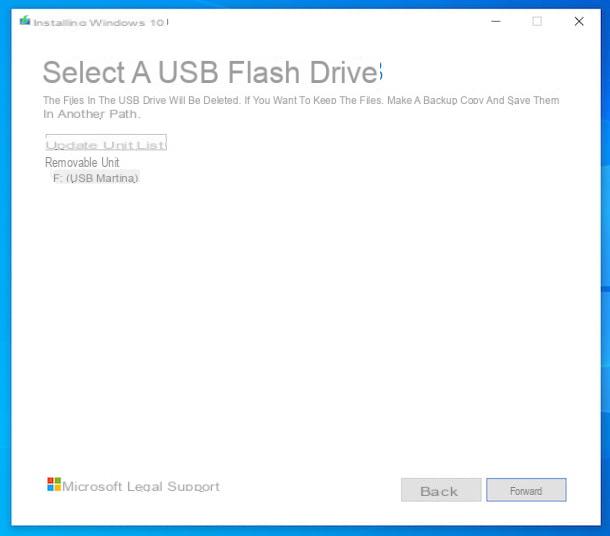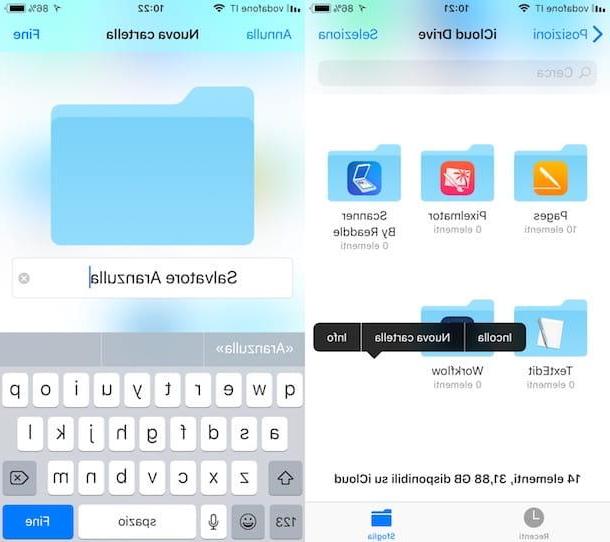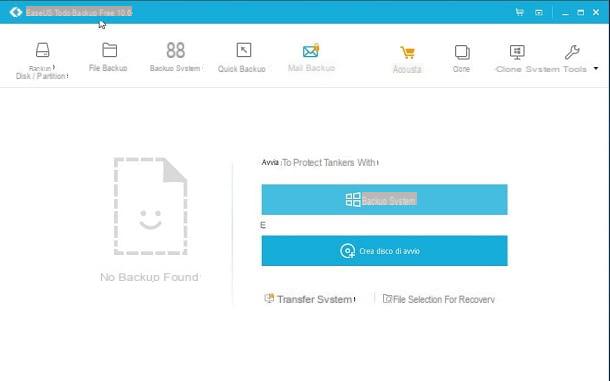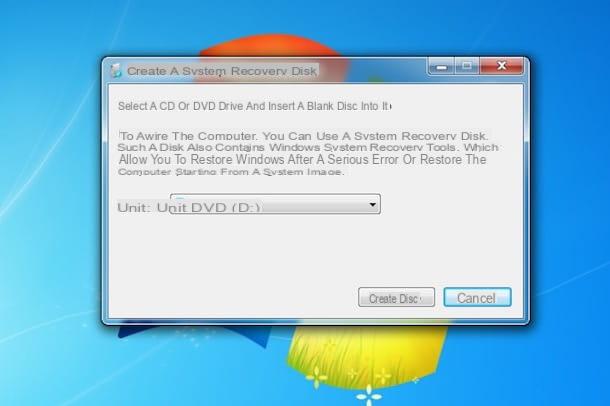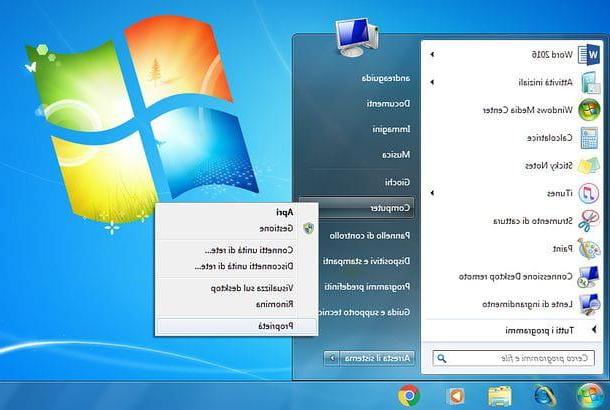Activate the function
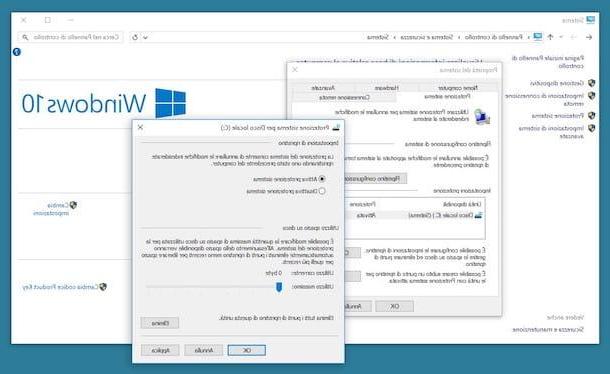
As also mentioned at the beginning of the guide, by default the function that allows you to create restore points on Windows 10 is disabled by default. In order to enable this feature all you have to do is click on Start button (The windows flag present at the bottom left of the taskbar), type control panel in the displayed search field and click on the relevant result in the list.
In the window of Control Panel which at this point will open on the desktop, click on System and security (if you can't see this item make sure that in the menu View by: at the top right the item is selected Category) then click on System and then select the wording Advanced system settings present on the left.
At this point, click on the tab Protection system, select the system disk (it is the one with the entry next to (System)) from the section that you find in correspondence with the wording Security settingsclick on your button Configure ... and then choose the option Enable system protection then confirm the changes made by clicking on the button first Apply and subsequently on OK. Done!
Create and manage recovery points
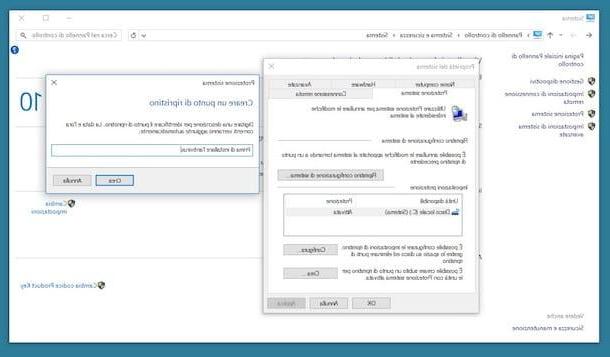
Once the feature is enabled, you can finally take advantage of the feature through which restore points can be created and exploited. Usually, restore points are created automatically by Windows 10 when you install new software or a new driver on your computer, but in some cases it can be useful to create them manually. How? I'll explain it to you immediately.
To begin with, go to the main screen of Control Panel, select the voice System and securityclick your System and subsequently on Protection system.
Now, click on the button Create ... attached to the new window that opened on the desktop, type a name to mark the restore point you are about to create and press the button Crea.
Once this is done, please wait a few moments for the restore point to be created. When the procedure is completed you will see a special warning appear on the screen. Then click on Close to close the window that has opened that warns you of the completion of the procedure.
If you need to, you can of course manage the recovery points created and the space that Windows 10 grants to them on the hard disk. How you do it? Very easy. After clicking on the item Protection systemclick on your button Configure ... then presses the button Delete to delete all recovery points created so far for the current drive.
If, on the other hand, you want to manage the space allowed for the creation of restore points, move the cursor that you find in correspondence with the section Disk space usage always in the same window. Depending on your needs, you can change the maximum amount of disk space used for system protection. Once the available space is exhausted, the oldest recovery points will be automatically deleted to make room for the most recent ones.
However, keep in mind that the maximum storage space to dedicate to system recovery depends on the size of the disk in use. Usually a value between 5GB and 10GB is used.
Restore the system
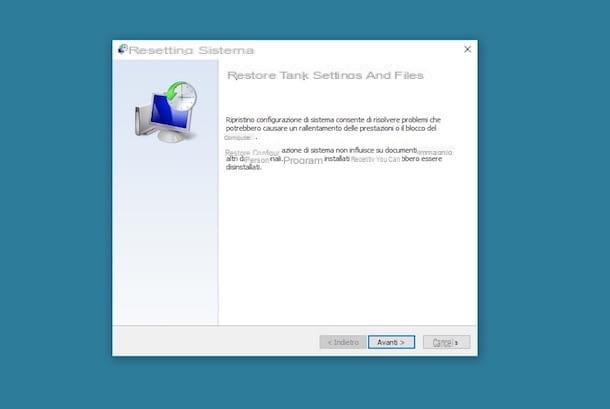
Once you have created one or more restore points on Windows 10 you can use them at any time to restore the system to a previous condition. You ask me how? Nothing simpler!
All you have to do is click on the Start button, to type restoration in the search field that you see appear and click on the item Restoration from the list that is shown to you. In the window that will subsequently open on the desktop click on Open System Restore and click on NEXT.
Now, indicate the date to which to report the system status and start the recovery procedure by pressing first on NEXT and subsequently on end then confirm the execution of the operation by clicking on Si in response to the warning you will see appear on the screen. Note that restoring settings, drivers, and programs may take several minutes. Generally, the further back you go with the date (so the more changes you have to make to the system), the more time it takes for the procedure to be completed.
To find out which applications and which drivers will be removed following the use of a certain restore point, select it in the Windows recovery utility and click on the button Look for interested programs you see at the bottom right.
In the event that the list of available restore points does not appear but the option is automatically selected Recommended recovery (through which you can restore Windows 10 to the state immediately prior to the current one), check the item Choose a different restore point and click sul pulsating NEXT to access the list of all available restore points.
If, on the other hand, you are able to view only the most recent restore points but you want to restore your PC with Windows 10 installed to a previous condition, to view even the oldest ones you must put the check mark next to the item Show additional restore points.
Alternative solutions
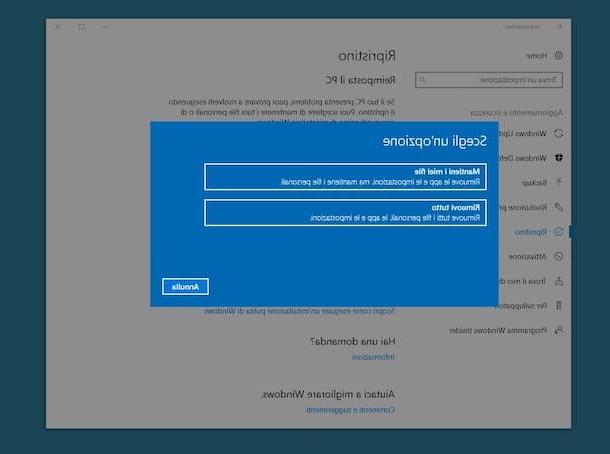
As anticipated at the beginning, on Windows 10 the function that allows you to perform system restore is disabled by default. Although Microsoft has not provided official explanations in this regard, most likely this choice is due to the introduction of new features through which it is possible to restore the system in an equally simple and fast way although in a different way. To be precise, I refer to the function File history, which allows you to recover accidentally deleted files so as not to lose them again (as long as you have two hard drives connected to your computer), and the functionality of OS recovery attached to the system settings, through which it is possible to either completely format the computer or restore it while leaving all documents unaltered.
To take advantage of the File History feature, you need to go to the Start menu, to type file timeline, click on the relevant result attached to the list that is shown to you and then click on the link Configure File History Settings in the window you see appearing on your desktop. Then press the button activate and the game is done.
You can later recover your files by typing restore files with file history in Start menu, selecting the corresponding result and then choosing the files on which to intervene from the displayed screen.
As for the function that allows you to restore the entire system, you can access it by clicking on the icon Settings (The gear wheel) annexed to Start menu, then clicking on Update and security in the window that opened and then on the wording Restoration placed sideways on the left. Locate the entry now Reset your PC and click sul pulsating To start found in its correspondence.
At this point, select the option Keep my files if you want to restore the operating system by removing the apps and settings but keeping your personal files, or the option Remove all to remove all personal files, apps and settings. Then follow the simple wizard that is proposed to you on the screen to confirm and start the execution of the operation.
Finally, I would like to point out that in the most desperate cases, that is to say when neither the function used to restore Windows 10 to a previous state, nor the one used to intervene on individual files and not even the one through which it is possible to restore the system should prove to be particularly effective, you can resort to using the tool Media Creation Tool, made available by Microsoft itself, and carry out the formatting of the operating system.
In case you are not aware of it, Mediante Creation Tool is a small free program from "Redmond house" through which you can download any version of Windows 10, install it on your PC, copy it on a stick or save it as an ISO image . For more information about it and to find out how to proceed in order to format the PC with Windows 10 installed using this tool, I suggest you read my article on how to format Windows 10 in which I proceeded to talk to you in an extremely detailed way on the matter.
How to create Windows 10 restore point
